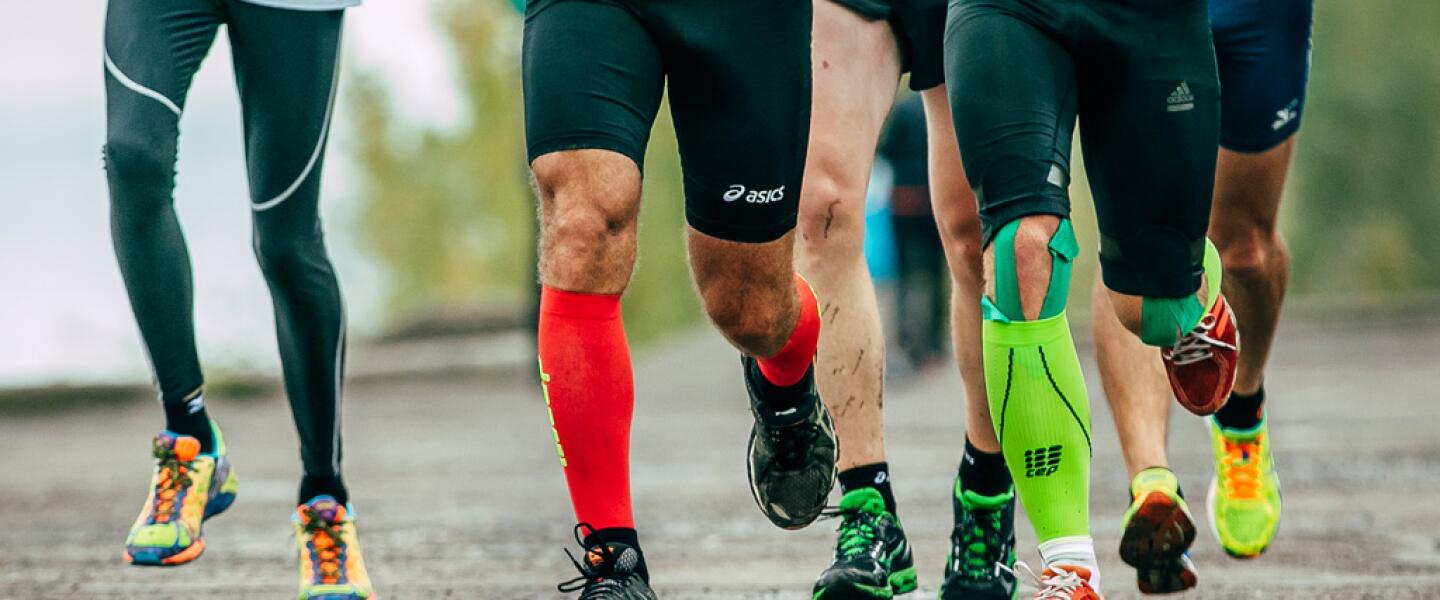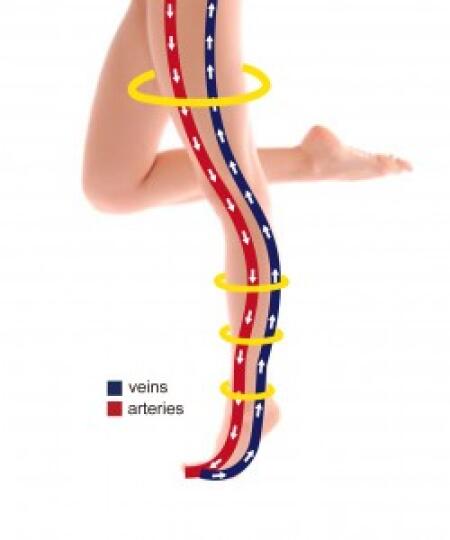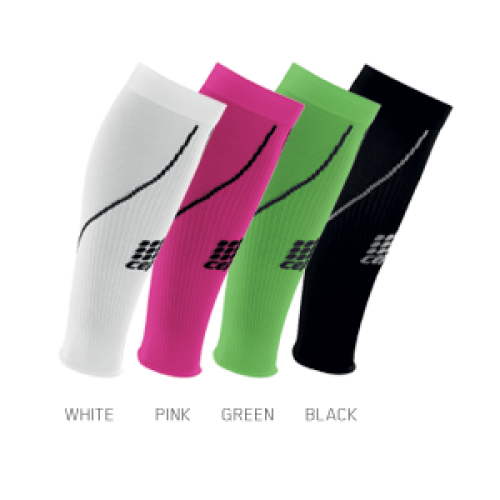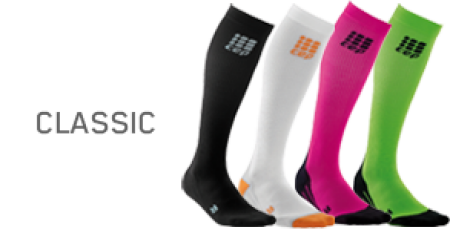
To really understand how compression socks and sleeves work, it’s important to have a basic understanding of how blood flows through the body. The heart pumps oxygen-containing blood to our extremities and working muscles through arteries. Once the cells use the oxygen and other nutrients from the blood, the then deoxygenated blood, along with lactic acid and other waste products enter the veins to get taken back to the heart. Once the blood gets back to the heart, it’s oxygenated from the lungs and the process is repeated.

Keeping oxygenated blood flowing to muscles is important for performance and the more oxygen cells have, the better they'll function. During exercise, the body produces lactic acid as a waste product. If lactic acid isn't eliminated, it will cause soreness and decrease your ability to perform. Muscular vibration during physical activity also contributes to fatigue. The force behind each step you take while running is 3-5 times your body weight. Over time, those small vibrations take a toll on your muscles.

Now that we know what the blood and muscles are doing while we are running, let’s talk about what compression socks and sleeves do to help the body. Compression socks and sleeves provide graduated compression, meaning the compression is higher (tighter) at the foot and ankle and lower (looser) as it moves up the calf and lower leg. This type of compression helps to fight the effects of gravity and assist the body in venous return (deoxygenated blood flowing back up to the heart). Compression will also help to stabilize the muscle and decrease the amount of muscular vibration, resulting in decreased fatigue. To sum up the benefits of compression; enhanced performance through increased blood flow, quicker recovery and decreased muscle soreness, and less fatigue. All good things!
Should I wear socks or sleeves? The answer to this question depends on a few things. If you have an injury that involves your arch, ankle, or lower Achilles tendon, you may want to wear a sock to give you compression over the injured area. Another factor to take into consideration is what type of socks do you prefer to run in. If you have a favorite pair of running socks that you can’t run without, you will likely prefer wearing the sleeve so you can wear your socks.

Compression for recovery: For recovery, you should wear the sock so that blood flow to the foot and ankle isn't constricted by the tightness of the lowest part of a compression sleeve.

Compression for travel or standing for long periods of time: During long periods of inactivity, for example when standing or sitting in the same position for a long time, the leg muscles do not contract sufficiently hard enough or frequently enough to force the blood upwards. As a result, blood gathers in the leg veins restricting it from draining from the tissues of the leg. This can cause a feeling of heaviness or tension in the legs, making them ache and feel tired. Swollen feet and ankles are often a result as well.

Is all Compression created equal? No. Compression is measured in millimeters of Mercury (mmHg). CEP Compression socks and sleeves are rated at 20-30 mmHg, which is considered 'Firm' compression. You also need to have a calf measurement done to determine which size sock or sleeve will work for you.
Latest News
Upcoming Events
Tully Free Library Turkey Trot 5K Run/Walk
All Day | 5872 Meeting House Rd, Tully, NY 13159
The Tully Free Library Turkey Trot 5K Run/Walk is held every year on Thanksgiving Day mornin…
Learn More ›Live Like Liam
All Day | Jamesville-DeWitt High School, 6845 Edinger Dr, De Witt, NY 13214
"Live Like Liam"... Celebrate life and community as you help fund important initiatives in L…
Learn More ›
Connect With Us
see the latest from Fleet Feet Syracuse